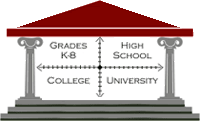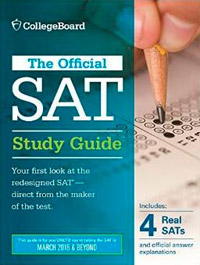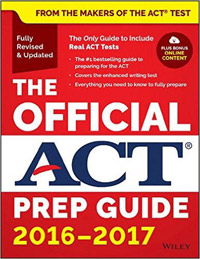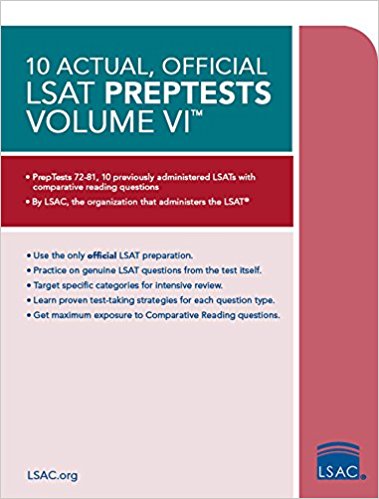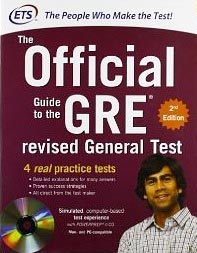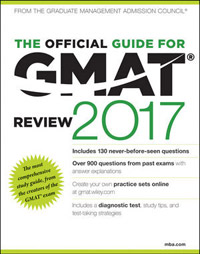|
Hello, students taking the PSAT this Wednesday, October 19th! To help ease your nerves a little bit, I have put together a list of test-day tips and reminders for you. If you’re not sure what the new PSAT even looks like, then download the free 2015 Practice PSAT and its answer explanations as well as the free 2016 Practice PSAT and its answer explanations.
Don’t forget to bring a watch (preferably a digital one with a stopwatch function) and a legal calculator with backup batteries.
New PSAT Test Structure Overview
Reading Test: 60 Minutes, 47 questions. You have to answer roughly 5 questions every 6 minutes. My tip is to try to keep the number of the question you are on as close to the number of minutes expired as possible. Focus on your “splits”: by the 30-minute mark you should at least be on question #24.
There is no one “right way” to approach the Reading section. Some people like to read the passages carefully, some like to skim them, and some like to save time by going straight to the questions. The answer will usually depend on your reading speed.
Writing and Language Test: 35 minutes, 44 questions.
The new Writing and Language Test is very similar to the ACT English Section. For that reason I strongly encourage you to download this PDF of ACT grammar and punctuation rules, and to review them.
Math No Calculator Section: 25 minutes, 17 questions.
Remember to look at the “big picture” in this section, and don’t be afraid to use estimation if the answers are spaced out. Questions get harder as they go within each question type (multiple choice, student-produced responses).
Math With Calculator Section: 45 minutes, 31 questions.
Remember that the questions get harder as they go within each question type (multiple choice, student-produced responses), so you want to go a little faster in the first half to save yourself the extra time you will need for the hard questions at the end. Don’t forget to review the list of Math formulas that you need to know (see below).
Please note: there is no Essay section on the PSAT.
------
Before I begin, here is what the College Board recommends (taken from http://www.collegeboard.com):
-Be well-rested and ready to go. Get a good night's sleep the night before the test.
-Eat breakfast.
-Bring two No. 2 pencils and a good eraser — a pencil is required for the multiple-choice questions and the essay. Mechanical pencils are not allowed. Pens are not allowed.
-Bring a calculator with fresh batteries.
-Bring snacks. You will get a short break at the end of each hour of testing time. You can eat or drink any snacks you have brought with you during these breaks. A healthy snack will go a long way toward keeping you alert during the entire test.
-Make sure you use a No. 2 pencil on the answer sheet. It is very important that you fill in the entire circle darkly and completely. If you change your response, erase it as completely as possible.
Incomplete marks or erasures may affect your score. It is very important that you follow these instructions when filling out your answer sheet.
-----
I would add some other tips to this list:
-Pencils: Bring one dull pencil in addition to your regular #2 pencils. This dull pencil will make it easier to fill in the multiple-choice "bubbles" and save you a few extra sections per question. You might want to bring a manual pencil sharpener as well.
-Food and Drink: Take some water or a sports drink with you, but don't drink too much--you don't want to be running to the bathroom during the test. As far as snacks go, I would recommend something dense and high-calorie like an energy bar. All that thinking is going to make you hungry!
-Calculators: Bring replacement batteries for your calculator, just in case. (I recommend the TI-83 and above for its graphing capabilities.) You might even want to bring a smaller calculator as a backup. Don't be too reliant on your calculator, but at the same time, you shouldn't waste time doing complicated arithmetic when you could be using your calculator instead. You are much more likely to make a careless error on the math section if you don't write things down and use your calculator to double-check.
-Digital Watches: Bring a digital watch and practice using the stopwatch function. Or, bring an analog watch, and set it to 12:00 at the start of each section. Keeping close track of the time and number of questions remaining will prevent you from having to rush or wonder how much time you have remaining in the section. Don't count on the proctor to tell you this, and don't count on having a clock in the room. (As a matter of fact, when I took the SAT many years ago, there was no clock in the room!) Students tend to rush their answers on test day, so using a stopwatch is the best way to pace yourself and prevent careless errors.
-Breaks: You should expect a brief break after every hour of testing. The PSAT is about three hours long, with 5-minute breaks after every hour of testing.
-Nerves: Remember, being a little bit nervous is a good thing, because it means that you care. Just trust your instincts and remember the lessons that we worked on, and you should be fine. FOR MY PRIVATE STUDENTS ONLY: If you're confused, you might want to think to yourself, "What would Brian say about this problem?"
If you find yourself starting to zone out or panic, sit back, close your eyes and take a few deep breaths and try to hit the “reset” button on your brain. It’s only the PSAT, after all, and it's not an official part of the college application process.
-Overall Strategies: Remember to "look at the big picture" and to pay close attention to the wording of each question. Don't forget to consider order of difficulty—if an answer choice looks too easy on a hard problem, then it's probably not the correct answer.
-Scoring: DON’T. SKIP. ANY. QUESTIONS. If you are unsure about a question, then mark it, take a “placeholder” guess, and move on. There is no penalty for incorrect answers on the new PSAT, so make sure that you fill in every last bubble and you will get one out of every four questions correct, simply by chance. I strongly suggest that you do not wait until there is only one minute left to do this! Make sure all the bubbles are filled in well ahead of time, in case the proctor accidentally ends the test early.
-Write it Down: As for the rest of the test, make sure to write everything down! The more you try to do in your head, the harder you have to think. Write things down as soon as you think of them, and you will prevent yourself from "burning out" later in the test. (This will also be helpful if you finish a section early and want to double-check your answers.) Don't forget to circle/underline relevant text--the more you write on the test, the better. Circle/underline relevant text in the Critical Reading passages and to try to "put your own words in the blank" for the Sentence Completions.
-Math: get the ball rolling: When coming back to a question you didn't know know to do, start anywhere. Doing something - anything - often gets the ball rolling enough for you to solve the question. Don't worry about "setting it up" correctly - just solve for something, draw a picture, estimate, etc.
-Math: "Drawn to Scale": You can assume that it's "Drawn to Scale" unless told otherwise. If a math problem doesn't specifically say that it's *not* drawn to scale, you can assume that it *is* drawn to scale. So always double-check your answers to make sure they make sense according to the illustration. For example, if you answered 30 degrees but it looks more like 120, then you know you must have made a mistake. In fact, you should always use common sense to quickly double-check your answers, even on problems that don't involve geometry. Even questions that say they are “not drawn to scale” are usually close approximations of the original--in other words, it’s not drawn to scale, but it’s not far off, either.
-Math: Plugging In: On the math section, ALWAYS CONSIDER PLUGGING IN AS AN OPTION. Remember, if the answer choices contain variables, plug in for those variables. If the problem does not include any specific values, plug in your own numbers. When the answers are constants, plug in the answers.
-Math: Formulas to Memorize. Check out this page for a list of all the math formulas and concepts you need to know on the new PSAT. All of these formulas/concepts also apply on the new PSAT.
-Reading Test: the question is king. Pay close attention to the wording of the question, and re-read the question several times (beginning / middle / end) to make sure that you are not going in the wrong direction. Don’t be fooled into choosing the right answer to the wrong question, or an answer choice that is true, but not correct.
-Reading Test: always peek at the next question to identify “question pairs.” The Reading Test on the new PSAT loves question pairs--questions where the following question says something like “Which choice provides the best evidence for the answer to the previous question?” In fact, this happens 10 times over the course of the PSAT’s 47 question--twice per passage. This means that 20 of the 47 questions on the test are part of these question pairs!
Outsmart the Reading test by always peeking one question ahead. This will allow you to answer these questions in pairs, using the line numbers in the latter questions to help you find the answer to the former questions. Remember that your answers should always agree with each other--if they are not connected, then one of them is incorrect.
-Grammar: read it s l o w l y: One of the best ways to hear grammar errors is to read the sentence very slowly - about half the speed you'd normally talk. Don’t just go with what “sounds right”--investigate all possible errors in the sentence in a meticulous manner. Among other things, the SAT loves to test verbs, pronouns and prepositional idioms.
-Writing and Language: check for paragraph agreement. If you’ve been studying for the current SAT, then you are used to isolated sentences. The new PSAT uses a totally different format, where the sentences are part of longer passages. That means that you must check for agreement with the rest of the sentences in the paragraph, instead of just the way it sounds in isolation. For example, if you say "these rooms" in sentence #2, then sentence #1 has to have the word "rooms" in it.
-Writing and Language: focus on the goal of the question, not just what “sounds best.”
-Medications and preparing for extenuating circumstances: If you are prone to allergies in the morning, or have any other medical conditions, then don't forget to bring your medicine in case you need it! If you have a cold, take the proper medicine and bring some tissues…but DON'T take any medicines that make you drowsy.
-The squeaky wheel gets the grease. Finally, don't be afraid to raise your hand and request a different seat if you are uncomfortable. In my many years of tutoring students for this test, I have heard almost every test-day horror story imaginable, from a broken desk to a testing room where the college band is practicing at full volume on the floor below! If you are uncomfortable for *any* reason, then raise your hand and request a different seat right away. Don't wait until the test has already begun, because then you will have no power to change the situation.
-**Pacing**: Usually, when students run out of time on a test, or have to rush at the end, this happens because they took too long to complete the first half of the test. Make sure that you set a "halfway" goal for yourself based on the number of questions in the section. For instance, in a 45 minute math section with 31 questions, you should be on least question #16 (ideally even further) by the time you are halfway through the section.
WHAT TO STUDY BEFORE THE TEST
1) Don't study anything new. Make a list of all the questions you got wrong the first time through. If you can, buy or find a fresh copy of the book, and try those questions again. See which ones you got right and wrong. Repeat all the ones you got wrong, in a different order so that your mind doesn't remember all the answers. Repeat until you get everything right. Remember to not only indicate why the right answer is right, but also why the wrong answer is wrong.
2) FOR MY PRIVATE STUDENTS ONLY: Review your personalized lesson notes from me.
3) Keep re-reading these test-day tips. Review the required SAT math formulas and concepts page again if necessary.
4) Relax--you've worked hard enough. No new tests or questions. Just review what you've already done. Trust the skills that you've already built and remind yourself of the techniques that you've already learned.
AFTER THE TEST
-You should receive your scores by the end of December, or early January at the latest. PSAT scores are sent to your school, not your home.
OK, that's all. GOOD LUCK!
Back to Blog Home
|

